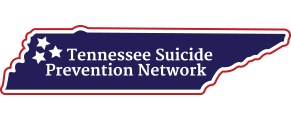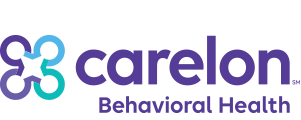No one experiences prescription drug addiction the same way as someone else. Understanding the signs, symptoms and side effects of prescription drug addiction is a key component toward starting the recovery journey.
Understanding Prescription Drug Addiction
Learn about prescription drug addiction and substance abuse
Prescription drug abuse is the usage of prescription medication in a way that was not intended by the prescribing physician, and is an alarming trend among adolescents and teens in the United States. Prescription drug abuse can take many forms – some teens may take another person’s prescription medications, take higher doses than prescribed, use the medication for another purpose such as getting high, or use the medications in a way not intended by the prescribing physician, such as crushing and snorting or injecting the pills. Prescription drug abuse may continue in a compulsive manner despite the negative consequences faced by the teens. Commonly abused prescription drugs include benzodiazepines, stimulants, and prescription painkillers. New preventative measures aimed at reducing the epidemic of prescription drug abuse may include early identification and intervention. The most common types of prescription drugs of abuse include:
Stimulants, such as Ritalin or Adderall, which are prescribed to treat ADHD and used to provide a heightened sense of mental acuity among those who abuse them.
Opiates are painkillers such as Vicodin and OxyContin that are used to manage moderate to severe pain. These drugs often provide users with feelings of euphoria and happiness, which makes these drugs enjoyable to abuse.
Sedatives/Anti-Anxiety medications such as Xanax, Valium, Klonopin, and Ativan are used to augment the high from another type of drug or as a means to bliss out and reduce stress.
Teens who’ve been to the doctor and prescribed a medication to treat an illness or injury often operate under the misguided assumption that because these medications are prescribed by a physician and regulated by the FDA, they are safe to use. What teens may not realize is that every single medication available on the market, from antibiotics to OxyContin, carries the risk for serious side effects, especially when taken in a manner not intended. Many teens mix prescription medications with other drugs such as alcohol or marijuana in order to achieve an even more potent feeling of relaxation and intoxication. This can lead to serious consequences for the teen, as combining these medications can easily lead to overdose and death.
The reasons behind prescription drug abuse can vary tremendously from teen to teen and situation to situation. The most commonly cited reasons that teens engage in prescription drug abuse include:
- To reduce appetite or increase mental alertness
- As a means to relax or reduce tension
- To get high
- To make existing intoxication more intense
- As a way of staving off withdrawal
- To be accepted by peers or to be social
- As a means to improve concentration and academic success
Statistics
Prescription drug addiction statistics
In a widely-publicized survey, it was discovered that almost 50% of teens erroneously believe that prescription drugs are much safer than street drugs. In 2005, nearly 600,000 drug-related emergency room visits were related to the usage of pharmaceuticals by teens. Each day in the United States, a person aged 12 through 17 abuses a prescription narcotic for the first time. In 2013, 15% of high school seniors admitted to abusing a prescription drug during the year prior.
Causes and Risk Factors
Causes and risk factors for prescription drug addiction
It’s believed that addiction to prescription drugs is the result of a number of influences, including genetic, physical, and environmental risk factors working together to create abuse and addiction to prescription drugs. The most commonly cited causes and risk factors for prescription drug abuse include:
Genetic: It’s well understood that addiction of all types runs in families. Teens who are born into a family in which addiction played a major role are more likely than their peers to develop an addiction to prescription medication and other drugs.
Physical: Teens are still undergoing serious growth and development in their brain. While the adult-sized pleasure center is developed during the teen years, their ability to resist temptation and regulate impulse control is immature. This can lead to the development of addiction to prescription drugs.
Environmental: Environmental stressors and life events play a role in the development of prescription drug abuse among teens. Peer groups that encourage or expose a teen to prescription drug use make a teen more likely to abuse these drugs him or herself. Additionally, people who experiment with drugs at a younger age are at greater risk for developing a full-blown addiction later in life.
Risk Factors:
- Usage of other types of drugs or alcohol
- History of childhood or teen abuse, neglect, and/or trauma
- Peer pressure
- Being a teen or in one’s early twenties
- Easy access to drugs, such as in a parent’s medication cabinet
- Preexisting mental health disorders
- Lack of understanding of the dangers of prescription medications
Signs and Symptoms
Signs and symptoms of prescription drug addiction
The symptoms and signs of prescription drug use in teens will vary by the type of drug used, the amount used, whether or not the drug was abused with another drug (called “polydrug” abuse), and any co-occurring mental health disorders. Most common symptoms of prescription drug abuse in teens are broken down by type of drug used:
Prescription Painkiller (Opiate Narcotic) Abuse in Teens:
- Impaired coordination
- Challenges paying attention in class
- Marked confusion
- Low blood pressure
- Depression
- Mood swings
- Constipation
Sedatives and Anti-Anxiety Agent Abuse in Teens:
- Unsteady gait
- Drowsiness
- Confusion
- Poor judgment
- Nystagmus
- Dizziness
- Hypotension
Stimulant Abuse Symptoms in Teens:
- Rapid weight loss
- Agitation
- Restlessness
- Impulsive behaviors
- Irritability
- Insomnia
- Hypertension
- Cardiac arrhythmias
Other Symptoms of Prescription Drug Abuse in Teens:
- Increased drug-seeking behaviors
- Using medication against medical advice
- Seeking prescriptions from multiple doctors
- Appearing high, amped up, or intoxicated
- Challenges making good decisions
- Taking more of the medication in higher doses than prescribed
- Lying to others about amount of drug used
- Stashing prescription drugs in various places around the house
- Social isolation
- Decreased ability to fulfill responsibilities at work or school
- Changes in personality and behavior
- Sudden need for money
- Frequent visits to the doctor
- Consequences of illegal drug use
Effects
Effects of prescription drug addiction
The long-term effects of prescription drug abuse in teens will diverge tremendously from teen to teen, based upon the length of addiction, type of drugs used, polydrug use, and the teen’s own genetic makeup. Common complications and long-term effects of prescription drug abuse in teens may include:
Prescription painkiller effects:
- Respiratory failure
- Decreased ability for body to respond to pain naturally
- Worsening mood swings
- Depression
- Increased risk for aspiration and choking
- Hypotension
- Respiratory depression
- Coma
Stimulant effects:
- Extreme weight loss
- Chronic insomnia
- Malnutrition
- Dehydration
- Dangerous hyperthermia
- Cardiovascular complications
- Tremors
- Aggressiveness and violence
- Psychotic behaviors – hallucinations and delusions
Sedative/anti-anxiety effects:
- Seizures
- Brain damage
- Motor function impairment
- Loss of normal coping skills
- Severe hypotension
- Memory impairment
- Chronic fatigue
- Depression
- Respiratory depression
- Insomnia
- Panic disorder
Other long-term effects of prescription drug abuse:
- Social isolation
- Legal problems
- Dropping out of school; academic failure
- Difficulties maintaining a job
- Organ damage and failure, especially to kidneys
- Physical tolerance – needing more of the drug to achieve the same level of intoxication
- Physical dependence – a state in which the body relies on the drugs to function, leading to withdrawal if drug is abruptly discontinued
- Worsening mental health conditions such as depression and anxiety
- Decreased cognitive function
- Addiction
- Self-harming behaviors
- Suicidal ideation
- Overdose
- Death
Overdose & Withdrawal Effects
Effects of prescription drug overdose and withdrawal
Many teens who abuse prescription drugs use a mixture of drugs and alcohol to increase the feelings of euphoria and reduce unpleasant effects. The combination of these drugs can very easily lead to overdose. Please remember it is never too late to seek treatment. But if you suspect someone you love is experiencing an overdose, call 911 immediately. Common symptoms of overdose on prescription medications include:
Stimulant overdose symptoms:
- Tachycardia
- Rapid respiration rate
- Chest pain
- Large pupils
- Seizures
- Muscle cramping
- Dizziness
- Coma
Prescription painkiller overdose symptoms:
- Coherent but unable to talk
- Limp musculoskeletal system
- Pale, clammy skin
- Cyanosis of the lips and fingernails
- Slow, erratic heart beat
- Choking sounds
- Vomiting
- Loss of consciousness
- Respiratory depression
- Respiratory collapse
- Coma
- Death
Sedatives/anti-anxiety overdose symptoms:
- Nystagmus
- Falling
- Confusion
- Stupor
- Seizures
- Coma
- Death
When a teen or adolescent becomes physically dependent upon a prescription drug, the teen may experience withdrawal symptoms when the drug use is stopped. Withdrawal from prescription drugs should always take place under the supervision of a doctor. The most common symptoms of withdrawal, by drug class include:
Stimulant withdrawal symptoms:
- Insomnia or hypersomnia
- Fatigue
- Psychomotor agitation
- Irritability
- Increased appetite
- Vivid, nasty dreams
Prescription painkiller withdrawal symptoms:
- Agitation
- Increasing anxiety
- Flu-like muscle aches
- Insomnia
- Goosebumps
- Sweating
- Abdominal cramping and diarrhea
- Nausea and vomiting
Sedative/anti-anxiety withdrawal symptoms:
- Benzodiazepine withdrawal syndrome
- Tremors
- Weakness
- Confusion
- Tachypnea
- Tachycardia
- Seizures
- Status epilepticus
- Substance abuse psychosis
- Coma
- Death











